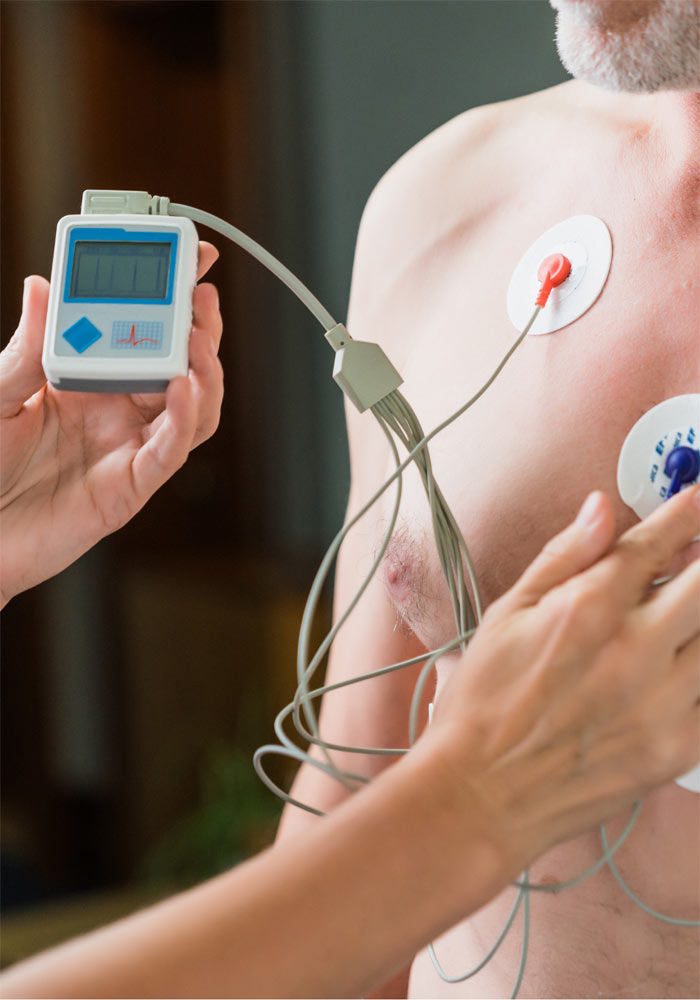HOLTER ECG

Cardiac Rhythm Monitoring (Holter)
This exam is performed using devices consisting of a central unit and special electrodes (“wires”) starting from the device and ending in special stickers (“patches”) which are placed on the anterior chest wall. The central unit records the electrical activity of the heart, in the way an electrocardiogram does but for a prolonged perior. During the exam the patient returns to his/her everyday activities.
A Holter examination depending on the specifications of the device utilized can continuously monitor heart rhythm for 24 or 48 hours or even longer periods. During the examination, the patient is asked to follow his usual routine and to note any instance he may feel a symptom.
When the examination is complete, data are transfered to a computer. Utilizing special software, the full recording is analyzed and special care is paid in order to identify potentially clinically significant events during this period.
This examination is conducted in the context of the investigation of palpitations, fainting or pre-fainting episodes, diagnosis or monitoring of arrhythmias such as atrial fibrillation, early diagnosis of life-threatening arrhythmias in patients with high arrhythmic risk, diagnosis of congestive heart failure, heart rate monitoring in patients under bradyarrhythmic drugs and/or other conditions.
Although the duration of a cardiac Holter examination is clearly longer than that of an electrocardiogram, it is quite common not to to reach a definite diagnosis since the arrhythmia might not occur during this time-frame. In this case the solution is to repeat the examination one or more times or to implant a device for continuous prolonged monitoring (loop recorder) of the heart rate which has a lifespan of 2-3 years. Clinical suspicion and differential diagnosis guide, if needed, additional testing (eg electrophysiological examination) depending on the findings and the specific characteristics of each patient.
No special preparation is required to perform the test, although increased chest hair growth in men sometimes causes problems and shaving may be required to keep the electrodes stable. The patient should not move the electrodes throughout the examination.
